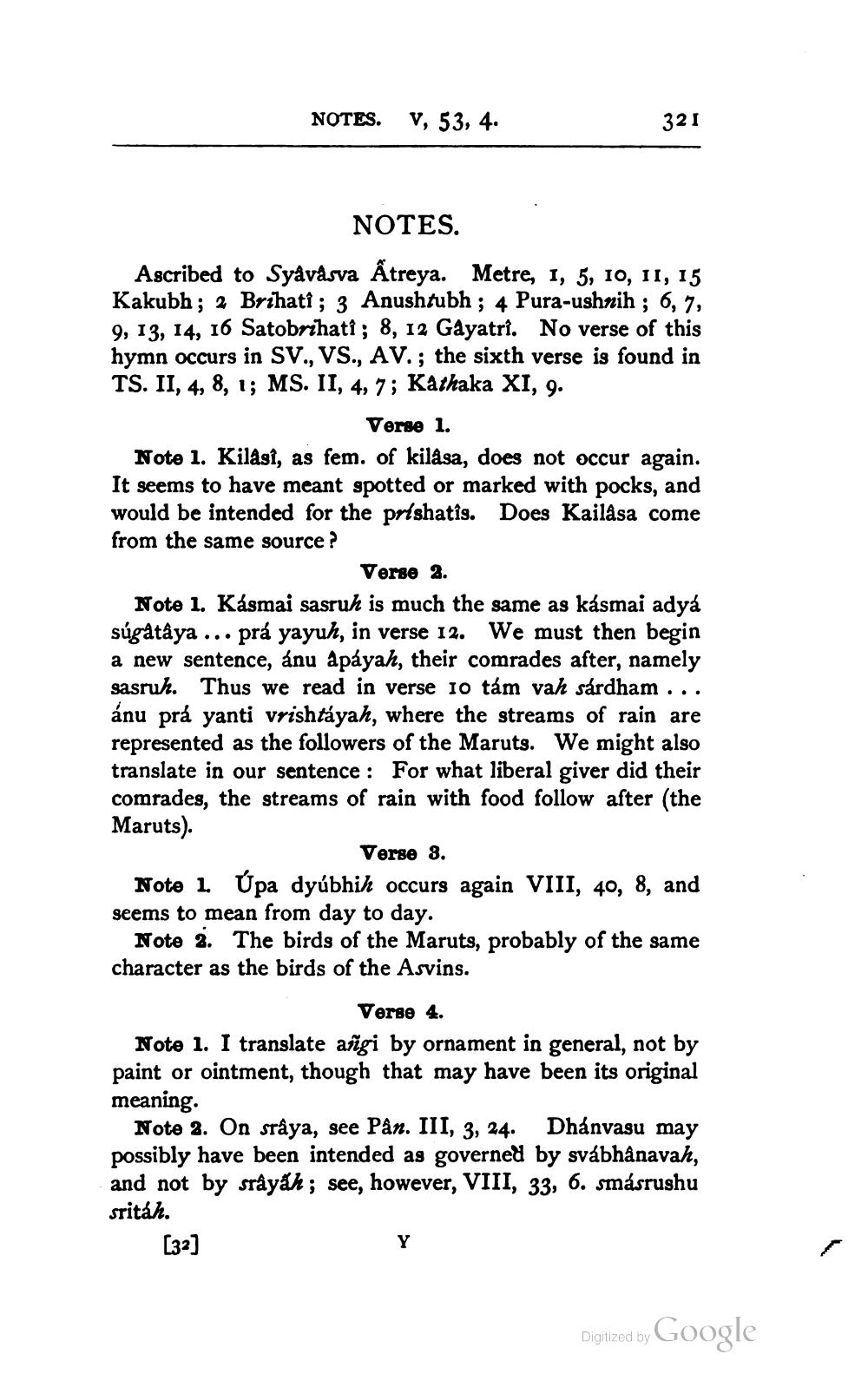________________
NOTES. V, 53, 4.
321
NOTES. Ascribed to Syåvasva Åtreya. Metre, 1, 5, 10, 11, 15 Kakubh ; 2 Brihati; 3 Anushtubh ; 4 Pura-ushnih ; 6,7, 9, 13, 14, 16 Satobrihati; 8, 12 Gayatri. No verse of this hymn occurs in SV., VS., AV.; the sixth verse is found in TS. II, 4, 8, 1; MS. II, 4, 7; Kathaka XI, 9.
Verse 1. Note 1. Kilasî, as fem. of kilasa, does not occur again. It seems to have meant spotted or marked with pocks, and would be intended for the prishatis. Does Kailasa come from the same source ?
Verse 2. Note 1. Kásmai sasruh is much the same as kásmai adya súgåtåya ... prá yayuh, in verse 12. We must then begin a new sentence, ánu apayah, their comrades after, namely sasruh. Thus we read in verse 10 tám vah sardham ... ánu prá yanti vrishtayah, where the streams of rain are represented as the followers of the Maruts. We might also translate in our sentence : For what liberal giver did their comrades, the streams of rain with food follow after (the Maruts).
Verse 3. Note 1. Úpa dyúbhih occurs again VIII, 40, 8, and seems to mean from day to day.
Note 2. The birds of the Maruts, probably of the same character as the birds of the Asvins.
Verse 4. Note 1. I translate añgi by ornament in general, not by paint or ointment, though that may have been its original meaning.
Note 2. On sråya, see Pån. III, 3, 24. Dhanvasu may possibly have been intended as governed by svábhänavah, and not by sråyah ; see, however, VIII, 33, 6. smásrushu sritáh.
[32]
Digitized by
Digitized by Google




